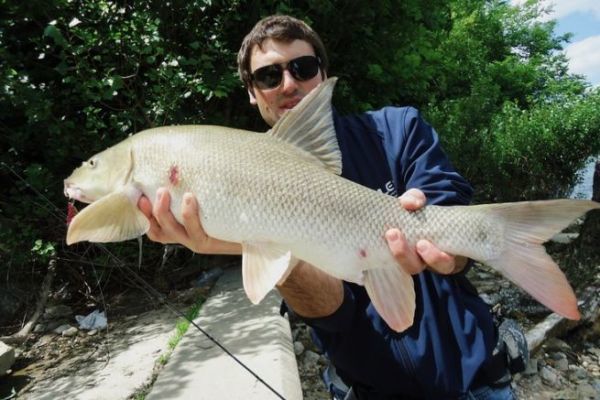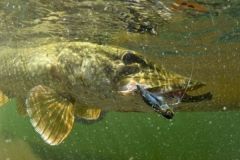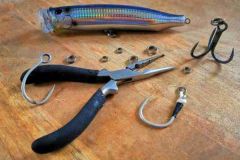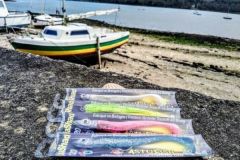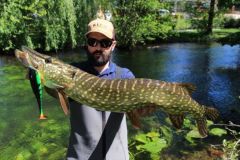The distinctive morphology of the barbel
The barbel is a fish of the Cyprinidae family, like the roach or carp. Its name is derived from the four barbels around its mouth, which is completely oriented towards the bottom. The barbel's streamlined body allows it to move effortlessly in strong currents.
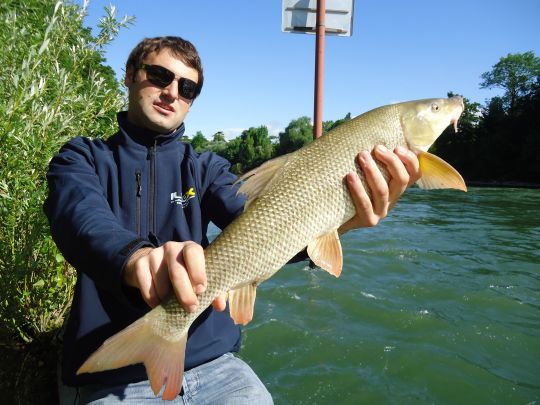
It has large triangular fins and a pointed snout that helps it both to split the water and to turn over small stones to feed on the invertebrates hiding there.
Light fishing in rivers known as "barbel zones"
The barbel loves small invertebrates. The tricky part is often presenting the desired imitation on the bottom. This is because barbels are often stuck to the bottom in current veins, feeding on prey at the bottom or drifting in the current.
We therefore adapt the sinker to the strength of the current, to the depth and more generally to the morphology of the fished area. The more bottom and current, the heavier the fishing. Conversely, the shallower the bottom and the weaker the current, the less weight is needed.
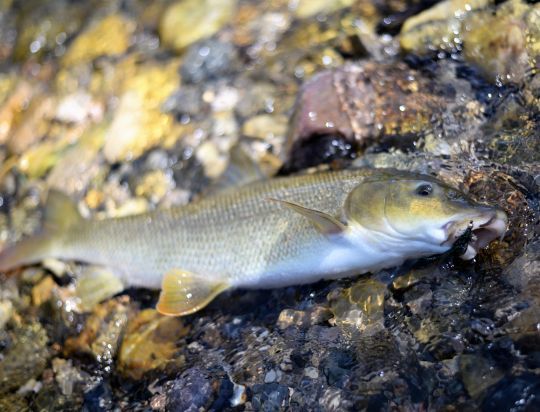
Micro soft lures imitating nymphs, crayfish, grubs and worms are excellent. Black and orange lures seem to be particularly popular with barbel.
Micro jigs are also formidable. They imitate a small crayfish and move very cleanly close to the bottom, in a fluid way, thanks to their skirt which allows the lure to glide and not move too jerkily.
For this type of lure fishing, we prefer sight fishing whenever possible. Ideally, the lure should pass along the bottom as close as possible to the target barbel. The lure will stop drifting or the barbel will shift or open its mouth.
Full tip UL or L (Ultra Light or Light) rods are ideal for clean casting of lightly weighted soft lures and for feeling the lure move close to the bottom. A fine braid from PE0.4 to PE0.6 is a real plus at all levels, to feel the slightest contact with the bottom, to make the lure drift naturally or to cast far and accurately. A 2 to 2.2 m rod is perfect, with a reel size 2000 to 2500.
Fishing for barbel in large rivers
Barbel can also be found on stretches of river much further downstream, provided there's a current. They like rapids and downstream of weirs and dams. Sight-fishing is more difficult, and soft-lure fishing for barbel is similar to linear fishing for pike-perch. Cast three quarters upstream, make contact with the bottom and lift the lure to let it drift close to the bottom, while making regular contact with the bottom.
Here again, crayfish imitations are relevant, as are small shads or commas.
Another formidable technique is the vibrating blade! This metal lure is very dense and allows you to fish cleanly on the bottom in hollow areas with fast currents, such as downstream of weirs. Once again, you need to make contact with the bottom, alternating between pulling about 1 metre and making contact with the bottom. The touch often comes at the end of the pull.
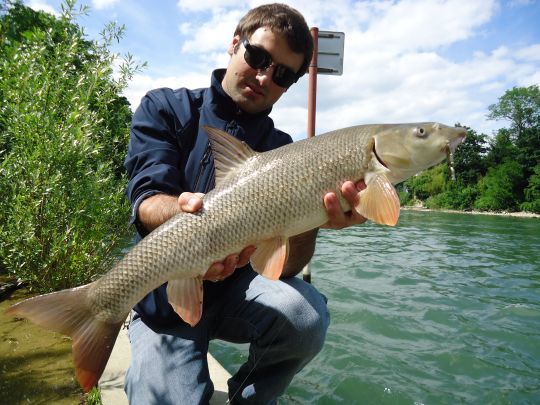
It's easy to imagine the blade lifting off the bottom in front of a barbel, which grabs it as it stops its upward trajectory. A very effective lure for barbel.
A more powerful rod in ML or M (Medium Light or Medium) will be an asset for heavier fishing and for conquering barbel of sometimes considerable size!
